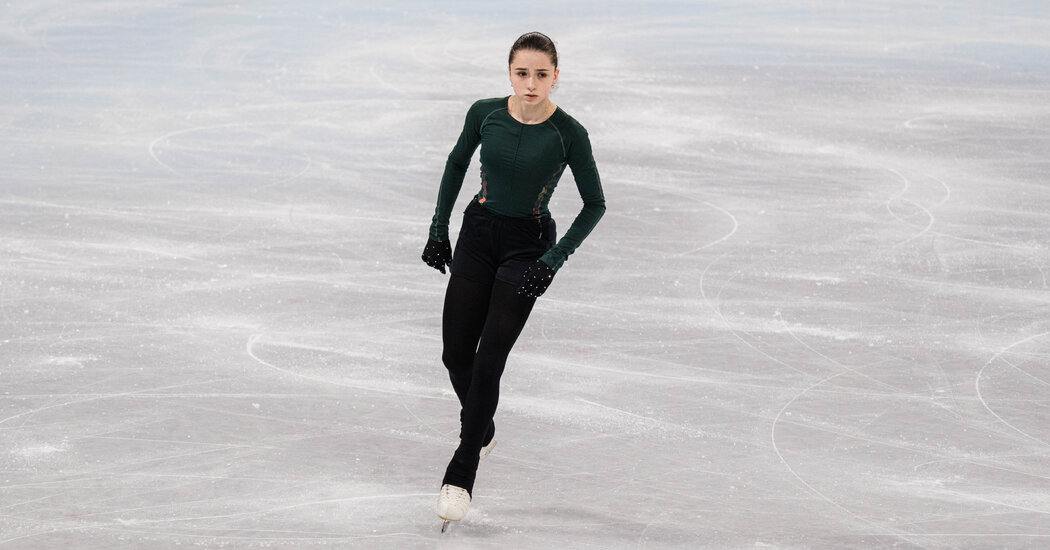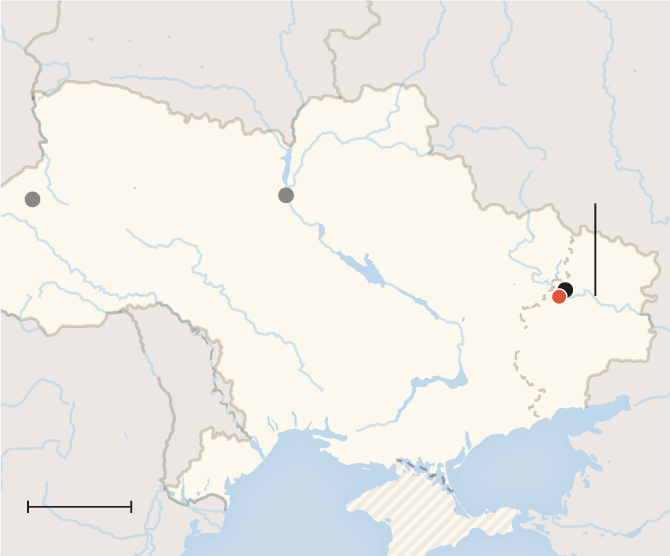
The Eileen Gu Show moved to the mountains, as China’s new favorite Olympic athlete — an 18-year-old freestyle skier from California — began competing in the second of her three events.
Gu, making a habit of building drama into her Olympic events, followed a middling first run in slopestyle with a stellar second one, advancing her to the event’s final.
She said afterward that “qualifiers are always scary,” and headed to the halfpipe for a practice session, trailed by a swarm of handlers and photographers. She is scheduled to compete in halfpipe qualifications on Thursday.
Gu, who grew up in California but competes for China, came in as a favorite in women’s slopestyle, the event where competitors ski through a mountain course of rails and obstacles before navigating a series of three big jumps.
On a sunny but bitterly cold Monday morning at Genting Snow Park, a day after snow and wind postponed the event, Gu opened the qualifications with a score of 57.28. By the time she returned for her final run, she was in 11th place, on the verge of not reaching the final.
With the temperature at 7 degrees below zero Fahrenheit, she coolly put down a solid run, then ate a shao bing, a type of Chinese flatbread. Within minutes, she and shao bing became a popular hashtag on Chinese social media.
Her score of 79.38 put her into third. Gu smiled and skied toward the halfpipe, comfortably settled into the slopestyle final scheduled for Tuesday morning (Monday evening in the United States).
There were a lot of spills on the slopestyle course, which snowboarders earlier had called one of the trickiest, most-technical courses they had seen. Among those who did not advance to the final was Sarah Hoefflin of Switzerland, the defending gold medalist and a three-time world champion.
The 27 competitors each had two runs, scored by a panel of judges. Only the better score counted. Kelly Sildaru of Estonia, considered Gu’s biggest rival in this event, had two strong runs for the highest qualifying score. Johanne Killi, of Norway, was second.
American Maggie Voisin, who finished fourth at the 2018 Winter Games, was fourth. She first qualified for the Olympics in 2014, when she was 15, but broke her leg during training in Sochi and did not compete.
Gu already has one gold medal, in big air, earned in a dramatic, come-from-behind fashion last Tuesday at an industrial park in western Beijing. Her win catapulted her to another level of fame and scrutiny. Afterward, she deftly answered questions from reporters for more than an hour while swiping away probing queries about her citizenship status.
The Olympics have a policy that athletes must be citizens of the country for which they compete, and China does not allow dual citizenship.
Gu, whose mother was born and raised in China and who maintains ties to Beijing, is a ubiquitous figure here. Her face graces advertisements of all sorts, and her exploits receive constant attention on state-run news channels.
Her portrait, made of 500 drones, lit up the sky in southern China after her big air victory.
But Gu has also stepped into a controversy over internet freedom in China, as some question her use of social-media sites that are banned in China and paint her as unable to understand the plight of millions of Chinese living under censorship.
The question for the second week of the Olympics is whether Gu can continue winning, keeping her popularity and marketing opportunities intact while sidestepping geopolitics and questions about her citizenship.
Slopestyle is an event that suits Gu, who showed technical prowess on the rails at a young age, working with the U.S. national team (she switched to China in 2019). She is a daring jumper, as her big air victory demonstrated.
In a smattering of international competitions over the past year, Gu has won or finished second in every slopestyle event.
Gu’s popularity has soared already, and it is hard to imagine just how big she will be if she manages to leave Beijing — on her way home to San Francisco — with multiple gold medals.




